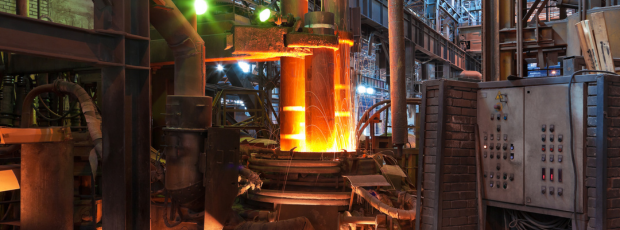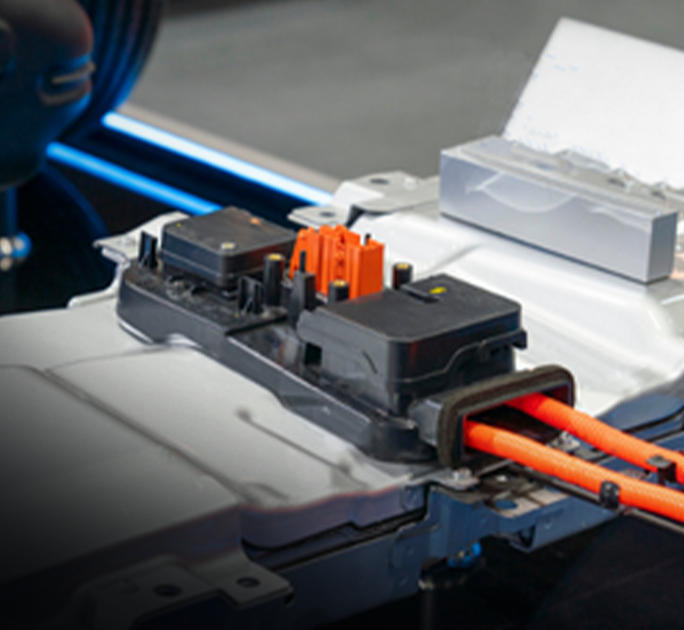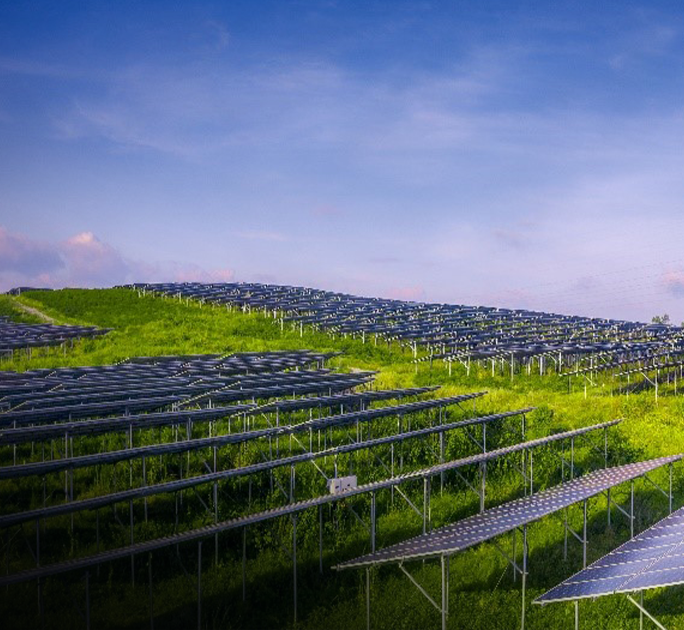Asia’s move to low-carbon steel picks up pace
Steel is an essential material and crucial to economic development.
In 2022, global crude steel production topped out at 1.88 billion tonnes1, and demand is expected to increase in the coming years—despite declining demand in China—as emerging markets including India, ASEAN, and Africa develop.
Amidst the continued demand for steel, there is a global need to decarbonise, and this needs to happen at an accelerated pace in order to achieve net zero by 2050 in response to the urgency of climate crisis. As an industrial sector, iron and steel is a significant contributor of greenhouse gas (GHG) emissions, accounting for roughly 7.2% of global GHG emissions2, more than other industrial sectors, such as chemicals and petrochemicals.. Currently, GHG emissions from steel production are mainly emitted in Asia, as it dominates global steel production. In 2022, China produced more than 1 billion tonnes of crude steel, representing over half of the global output, followed by India and Japan.
With the expectation that global steel demand will continue to increase—coupled with its current intensive GHG emissions profile— various regulatory measures and voluntary initiatives have begun to emerge as decarbonisation gathers steam. For example, in late 2022, the European Union (EU) became the first regional bloc to implement a carbon border adjustment mechanism3 (CBAM), which would tax imported goods with high GHG emissions. This tariff has a direct impact on commodities, such as iron and steel, cement, fertilisers, aluminium, electricity, hydrogen, and some chemicals. Although the CBAM will only impact goods entering the EU, it is expected to have a ripple effect across these industries, as companies operating outside the EU will be incentivised to lower their GHG footprints to access the EU market.
As the dual imperatives of stable supply and sustainability converge, Asian steelmakers must explore opportunities to improve production efficiency and adopt low-carbon technologies in order to decarbonise steel production.
Emerging decarbonisation strategies and challenges
One area of growing focus among Asian policymakers and companies is the production of low-carbon and net-zero steel. However, a supply chain of low-carbon and net-zero steel will depend on the ability of the industry to access commercially viable and sufficiently mature technologies as well as reliable sources of clean energy.
In 2022, the World Steel Association (WSA) produced a roadmap4 that provided essential insight into the steel industry’s decarbonisation progress. The report showed that, in the near term, the steel industry was expected to gradually shift towards the adoption of electric arc furnace (EAF) technologies paired with scrap steel or natural gas-based direct reduced iron (DRI). In the medium term, hydrogen plasma smelting reduction (HPSR) would become a viable alternative, while EAF methods based on green hydrogen-based DRI (H2-DRI) would be a long-term option given the need for more economical prices. Chinese state-owned steelmaker Angang is already exploring its potential with the 2023 launch of a H2-DRI plant5 with a DRI production capacity of 10,000 tonnes a year.
It’s clear that EAF steelmaking will be critical to decarbonising the steel industry, as it is cleaner and less carbon-intensive than conventional steelmaking technologies such as blast furnace-basic oxygen furnace (BF-BOF) steelmaking. Currently, BF-BOF steelmaking is the dominant mode6 of steel production—globally and in Asia. In China and India, existing BOF plants have an average age of just 10 to 15 years7. In today’s economic context, abandoning these plants would be economically unfeasible for steelmakers, even more so with the additional CAPEX needed to transition to EAF steelmaking.
EAF generally relies on steel scrap, though some plants may also use a combination8 of scrap, DRI and pig iron or hot metal due to insufficient supplies of steel scrap. Compared to BOF, steel products made from the EAF process in the US were found to be 75% less carbon-intensive9, while the DRI-EAF process reduced GHG emissions by approximately 35%. This is due to EAF’s use of electricity, versus BOF’s consumption of coking coal. Cost considerations, existing systems and the availability of raw materials will influence steelmakers’ ability to transition to green steel.
Additionally, the availability and cost of scrap steel (recycled steel)—a key raw material in the EAF process—remains a concern as recent geopolitical events have contributed to disruptions in global scrap supplies, leading to an uptick in prices. In the near term, we’ll see steelmakers balance these cost considerations against their decarbonisation targets.
Aside from EAF, Asian producers are also exploring decarbonisation innovations, such as carbon capture, utilisation, and storage (CCUS) technologies which help reduce GHG emissions from steelmaking. These technologies’ relative immaturity and the high cost of implementation have largely limited their adoption in Asia at this point; however, they are gradually being embraced. Furthermore, the wide range of low-carbon technologies on offer today show that steelmakers do not lack options, and given enough time and right market economics, their appetite to adopt will rise.
China and India are key to decarbonising steelmaking
As the two largest steel-producing countries, China and India are key players in decarbonising steel in Asia and globally.
China has made progress on its commitments to limit GHG emissions through several initiatives. First, it is building up its EAF capacity with the goal of having EAF account for 15% to 20% of its total crude steel10 output by 2025. Chinese regulators are also experimenting with a new approach to carbon taxation that would see it cut annual steel production11. Chinese steel giants are also investing heavily in carbon-reduction. Baowu Group, for example, has committed to cut 30% of carbon emissions12 per metric tonne of crude steel by 2035, with the goal of achieving carbon neutrality by 2050. Baowu has also signed a five-year partnership13 with mining giant BHP to collaborate on efforts to reduce GHG emissions from the steel industry value chain.
Elsewhere, India is exploring plans to potentially mandate the use of green steel14 in public sector projects, while local steel giants actively push forward ways to decarbonise the steel industry. In 2021, Tata successfully commissioned a pilot plant to capture five tonnes of carbon15 per day from blast furnace gas from its Jamshedpur factory, which it plans to reuse. JSW Steel, on the other hand, plans to invest around US$1.26 billion to reduce carbon emissions16 by replacing thermal power with renewables and increase the use of scrap steel. Most recently, ArcelorMittal India signed a supply agreement17 with Siemens Gamesa, a renewable energy engineering company, to deliver 46 wind turbines to generate clean power for its western India steel plant. The wind turbines are expected to cover 20% of the company’s electricity needs and reduce GHG emissions by 1.5 million tonnes each year.
Decarbonising China and India’s steel industries will be critical to driving the global transition. Industry-wide cooperation as well as international engagement can provide much-needed support and financing. Global steelmakers can provide the required impetus to decarbonise by emphasising the need for green steel and creating the market and infrastructure for producers in both countries to thrive.
The future of steel
As economic growth continues to pick up across the region, Asia’s steel demand will continue to rise. With the current level of green technology maturity and the high costs of initial implementation, steelmakers have plenty to do to realise their decarbonisation aspirations.
But a path towards green steel is a must and is already being shaped. More sustainable steelmaking technologies like EAF are being adopted at varying rates globally.
The journey to net zero for the steel industry will take time, given the time needed for technologies to mature. Steelmakers can begin by investing in the necessary infrastructure to improve production efficiency and reduce emissions, thereby producing low-carbon steel, as an essential first step. There are myriad strategies at their fingertips, whether it’s switching to renewable energy sources, partially adopting EAF, or replacing fossil fuels with natural gas-based “grey” hydrogen, and simply improving its production efficiency.
Costs will remain a major factor. This is where financial institutions can play a role by providing pivotal financing and risk coverage to support the transition. DBS Bank, for example, facilitates technological innovation in steelmaking to help manufacturers transition to low-carbon and net-zero steel with a targeted approach to financing. By leveraging its Sustainable & Transition Finance Framework & Taxonomy18 for midstream stakeholders, such as iron and steel producers, DBS provides key financing to help increase the use of scrap-based steel and make the use of CCUS technology commercially viable.
Given the impending arrival of the EU’s CBAM, Asian steel producers will face new regulatory challenges19. Steelmakers and governments in Asia will need to work together to find pragmatic solutions to address increasing cross-border regulations and speed up adoption of low-carbon and net-zero solutions for the steel industry. What’s evident is that steelmakers have a will to achieve a net-zero future—so there will be a way.
1. https://worldsteel.org/media-centre/press-releases/2023/december-2022-crude-steel-production-and-2022-global-totals/#:~:text=to%2Ddate%20aggregate-,2022%20global%20crude%20steel%20production%20totals,annual%20production%20totals%20by%20country.
2. https://ourworldindata.org/emissions-by-sector
3. https://www.theguardian.com/business/2022/dec/13/eu-becomes-first-leading-economy-to-legislate-for-green-tariff-on-imports
4. https://www.iea.org/reports/iron-and-steel-technology-roadmap
5. https://www.seaisi.org/details/21695?type=news-rooms
6. https://www.fastmarkets.com/insights/no-global-scrap-shortage-looming-cmc-says
7. https://worldsteel.org/media-centre/blog/2018/is-it-time-for-china-to-switch-to-eaf-steelmaking/
8. https://prco-america.com/portfolio-item/electric-arc-furnace-eaf/#:~:text=Raw%20material%20may%20be%20up,pig%20iron%20and%20hot%20metal.
9. https://steelnet.org/independent-study-validates-that-steelmaking-by-electric-arc-furnace-manufacturers-in-u-s-produces-75-lower-carbon-emissions/
10. https://www.spglobal.com/commodityinsights/en/market-insights/latest-news/energy-transition/011122-analysis-chinas-eaf-steelmaking-capacity-on-rise-amid-decarbonization-goals
11. https://www.bloomberg.com/news/articles/2023-03-15/china-to-cut-steel-output-for-third-year-to-hit-climate-goals?leadSource=uverify%20wall#xj4y7vzkg
12. https://www.spglobal.com/commodityinsights/en/market-insights/latest-news/energy-transition/120321-chinas-decarbonization-goals-get-boost-from-baowus-carbon-reduction-plans
13. https://www.bhp.com/news/media-centre/releases/2020/11/bhp-partners-with-china-baowu-to-address-the-challenges-of-climate-change
14. https://mercomindia.com/government-mulls-mandating-green-steel-public-projects/
15. https://www.dailypioneer.com/2021/state-editions/tata-steel-commissions-india---s-first-co2-capture-plant.html
16. https://www.steeltimesint.com/news/jsw-steel-and-sms-group-sign-mou-to-produce-green-steel
17. https://www.steeltimesint.com/news/arcelormittal-india-to-receive-clean-energy-supply
18. https://www.dbs.com.sg/sme/pdf/IBG-Sustainable-and-Transition-Finance-Framework_Jun2020.pdf
19. https://www.shearman.com/perspectives/2021/08/cbam-and-revised-eu-ets-implications-for-the-steel-industry




